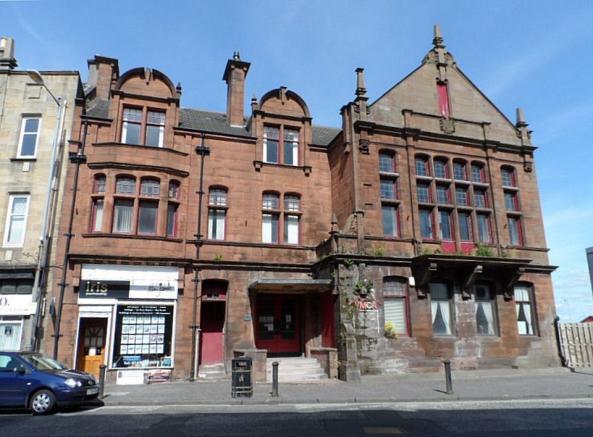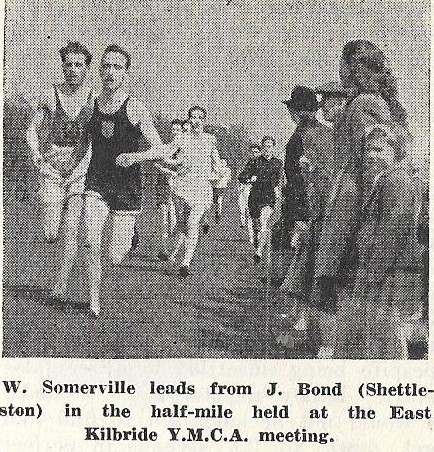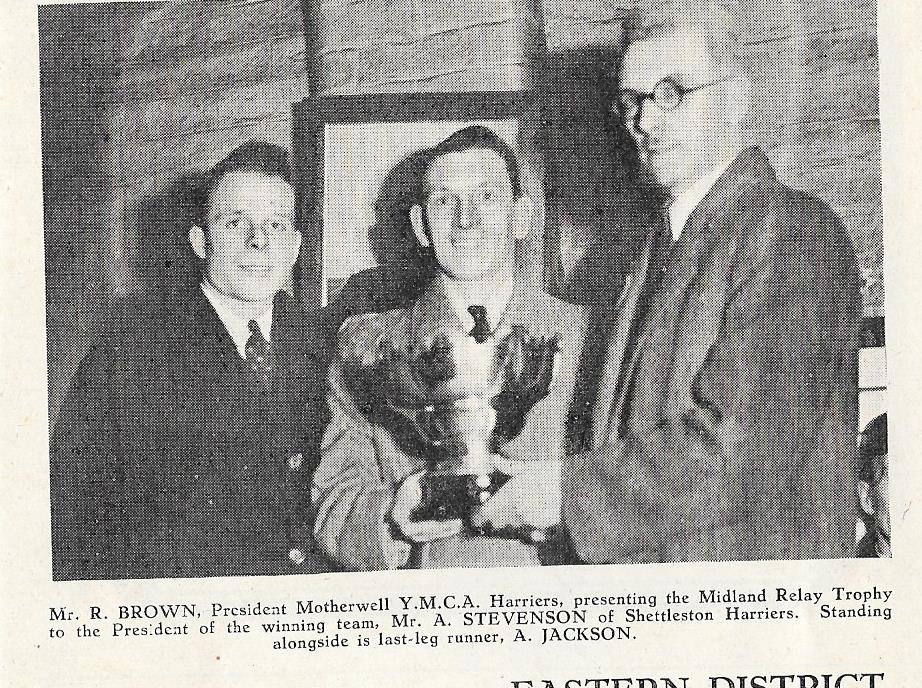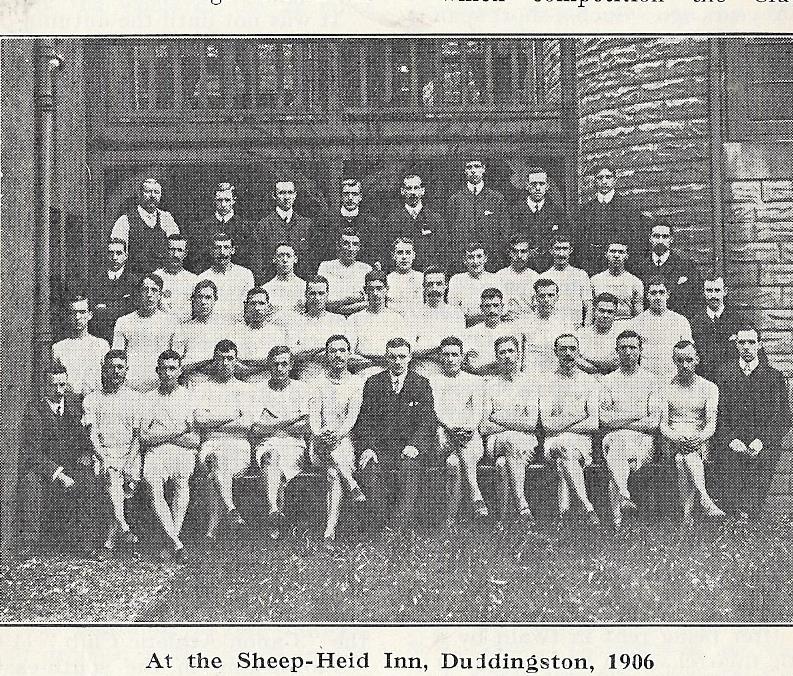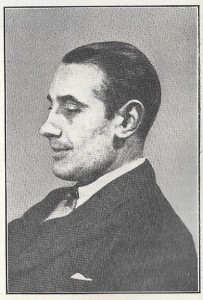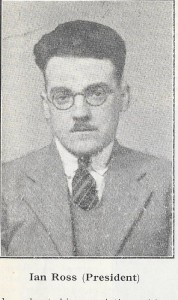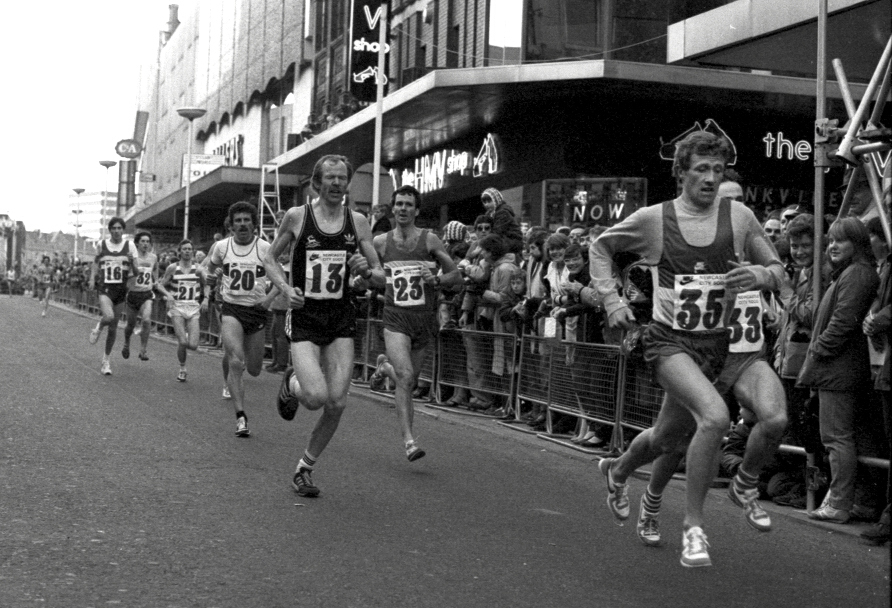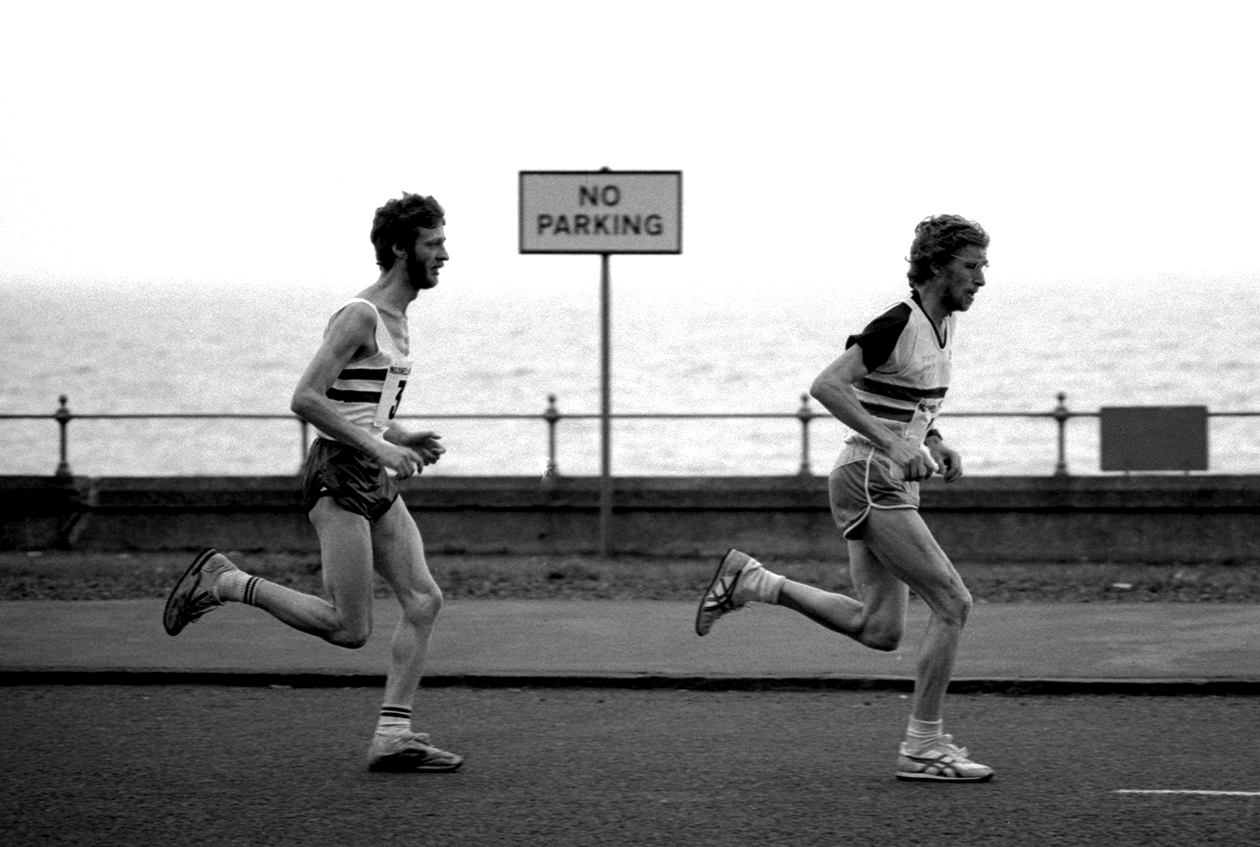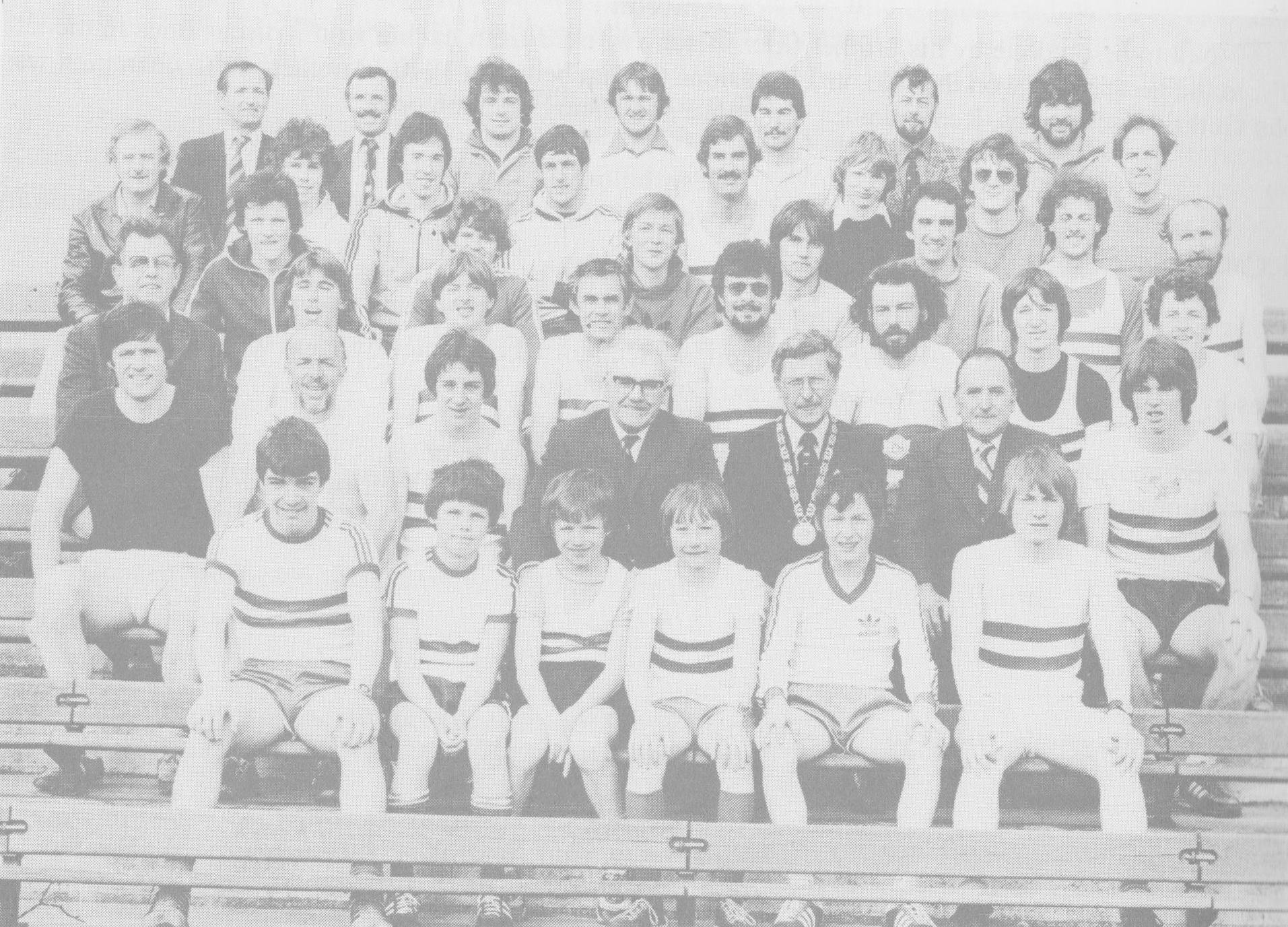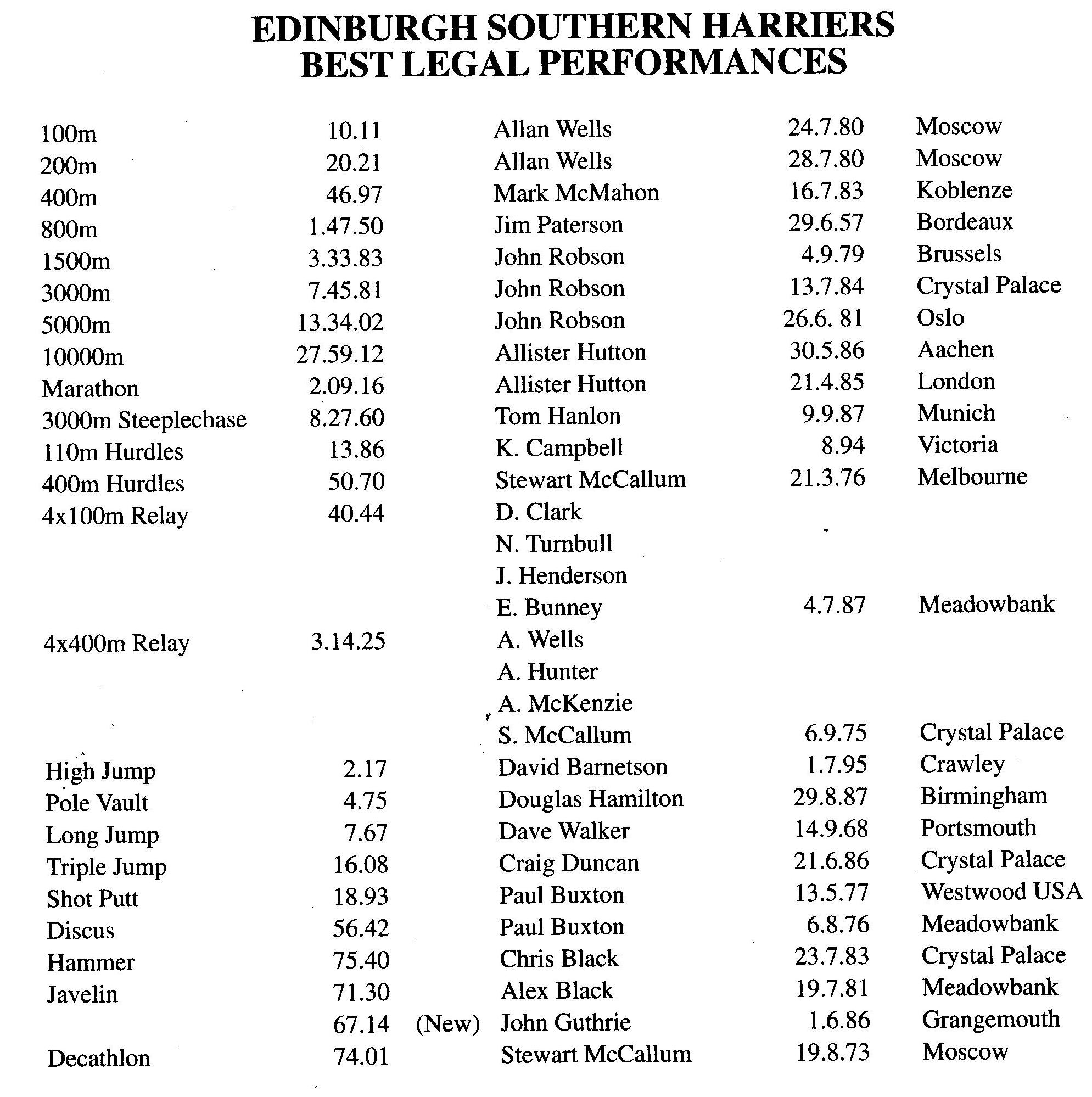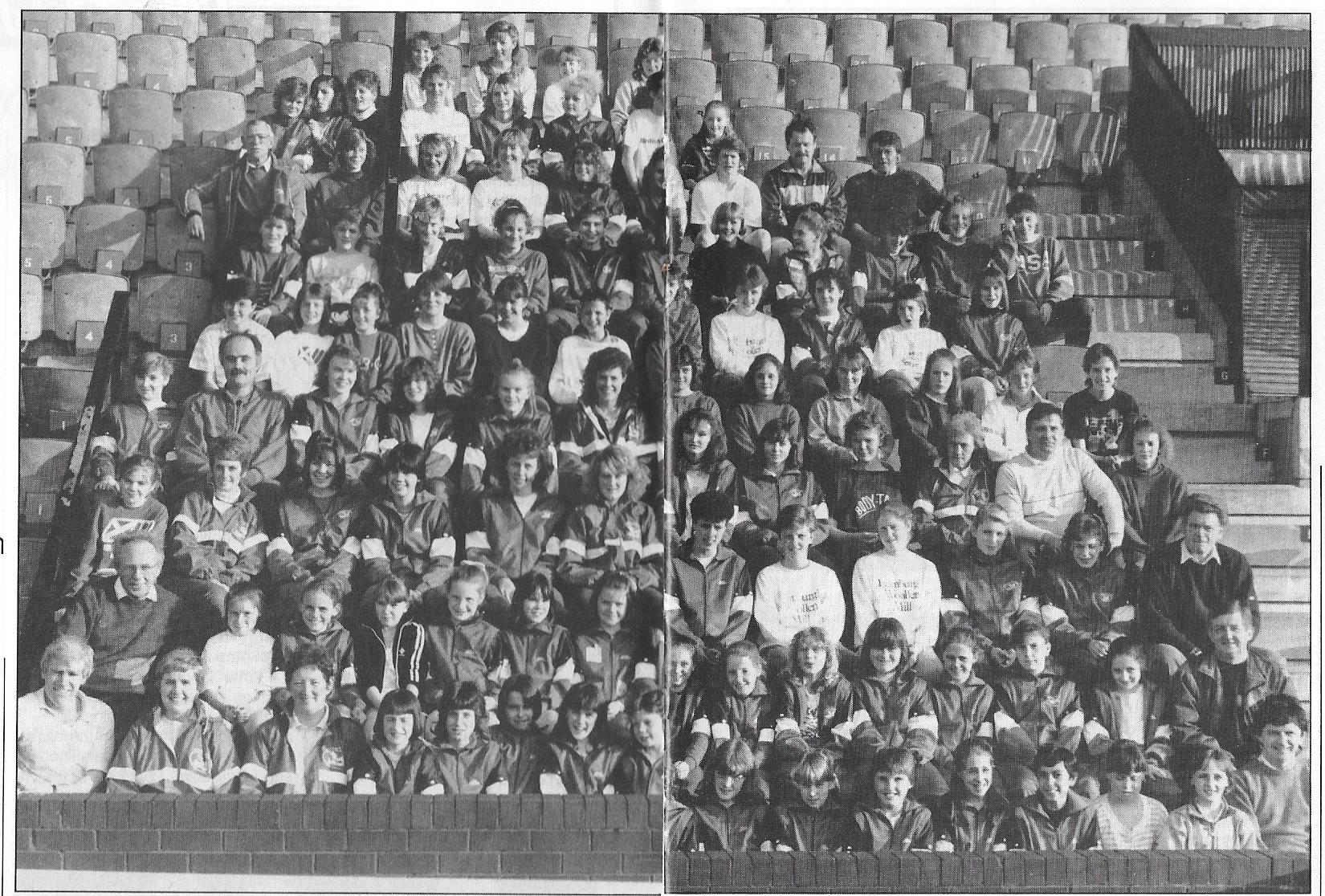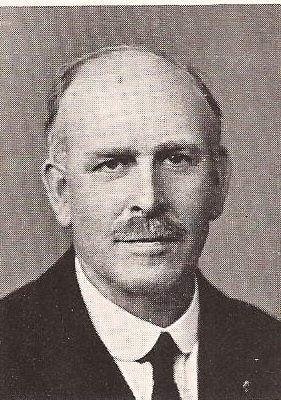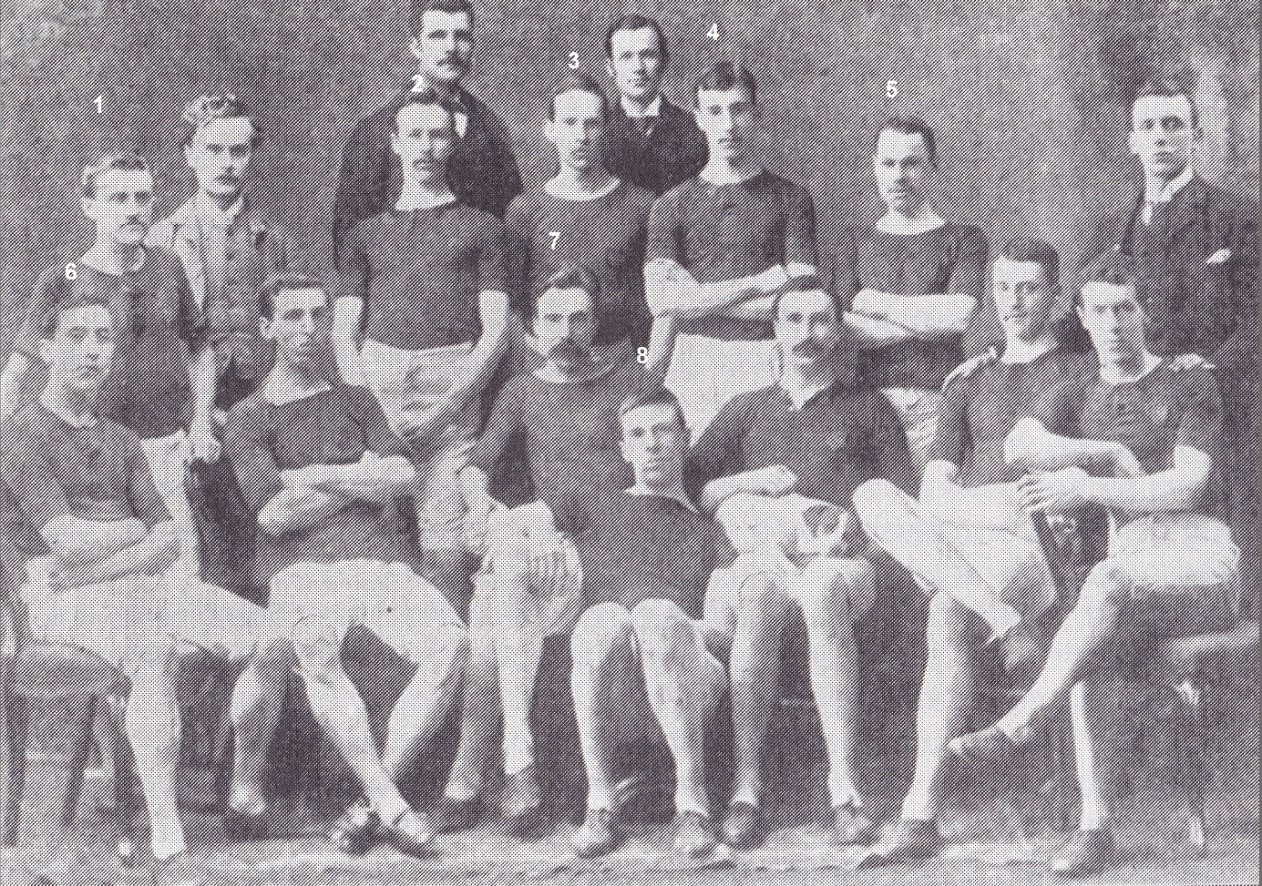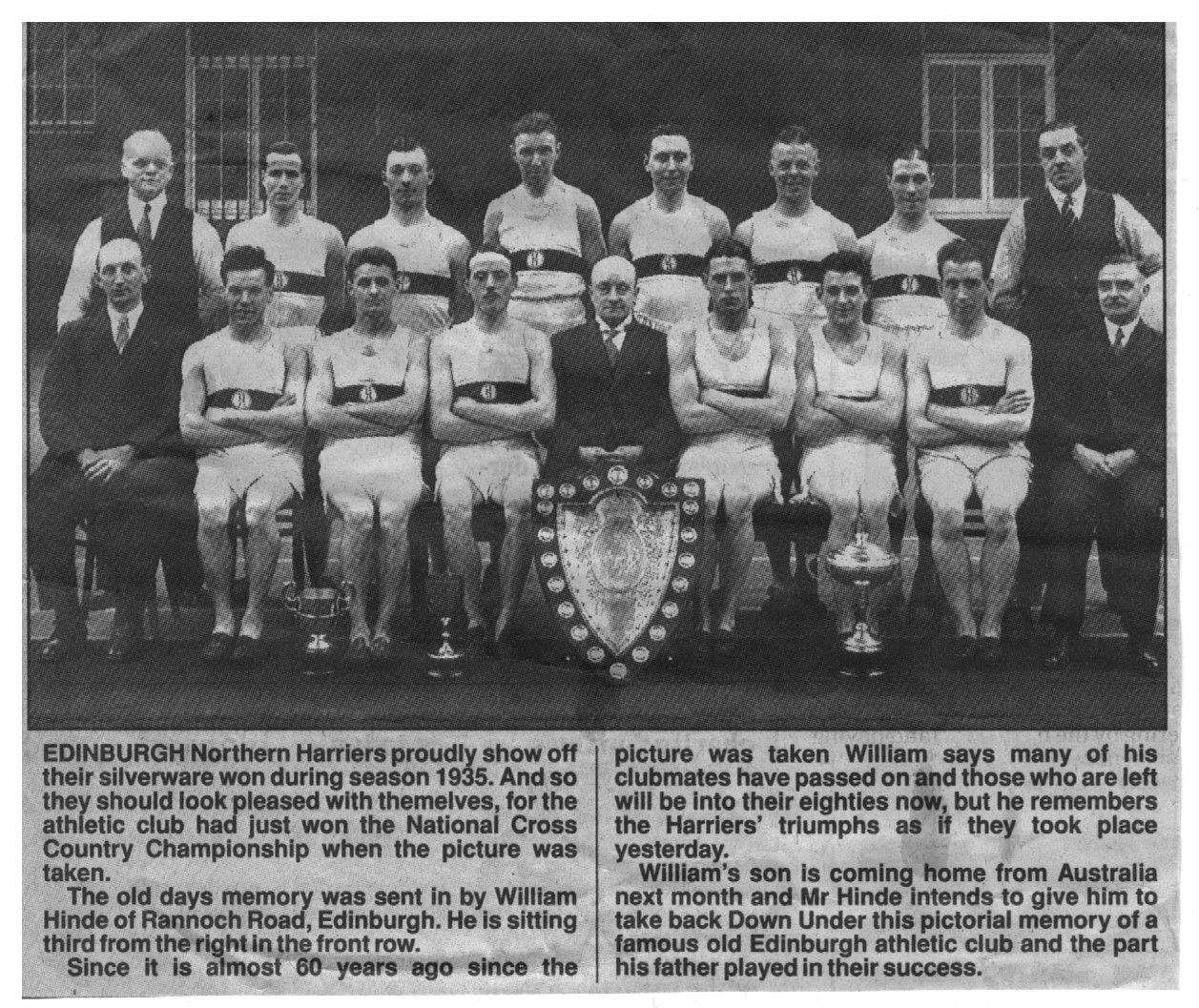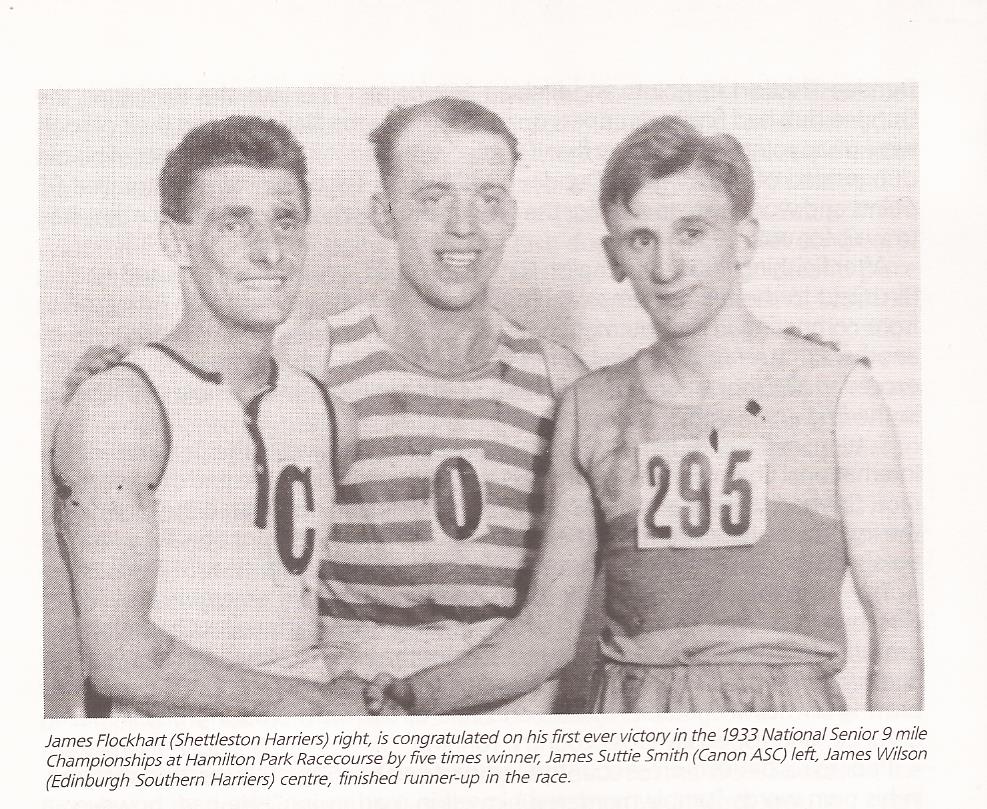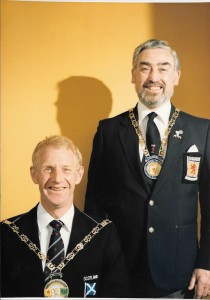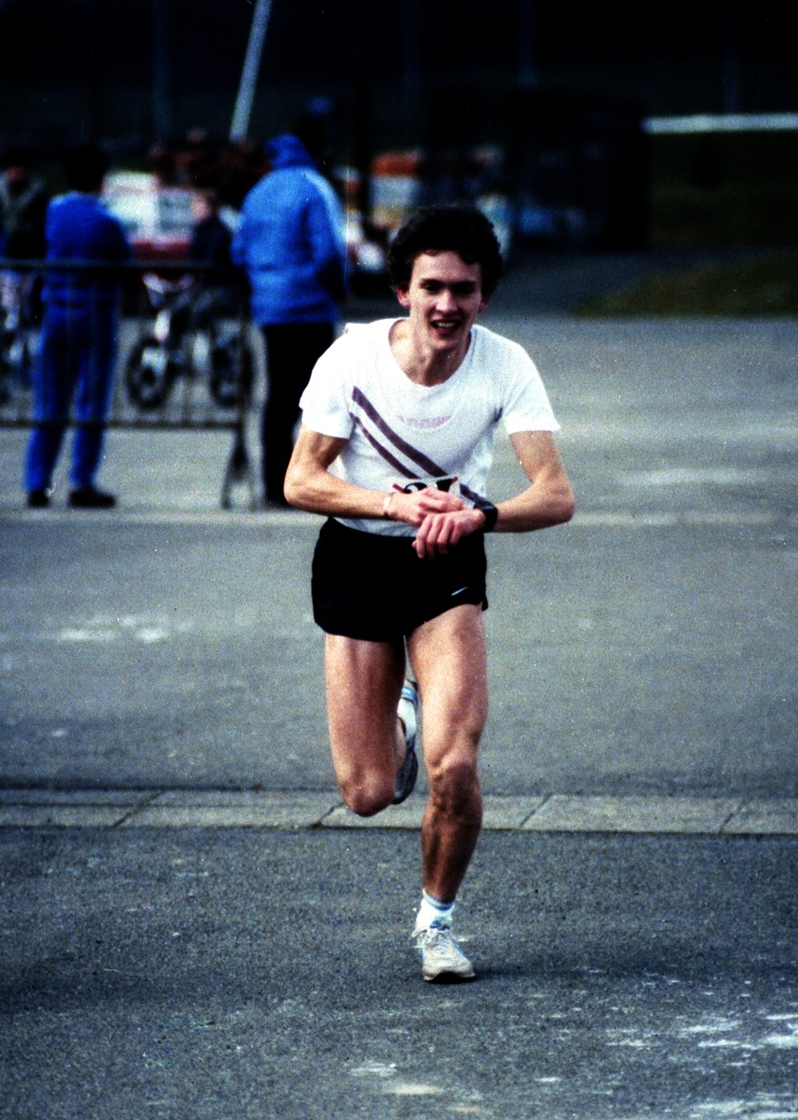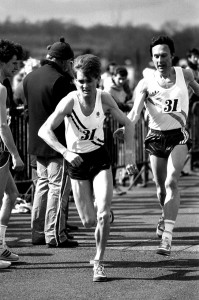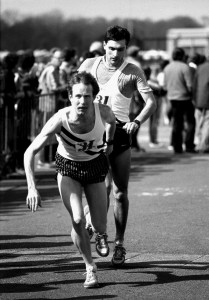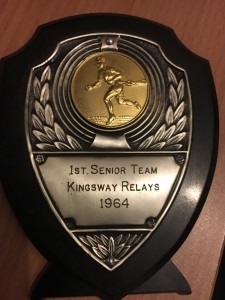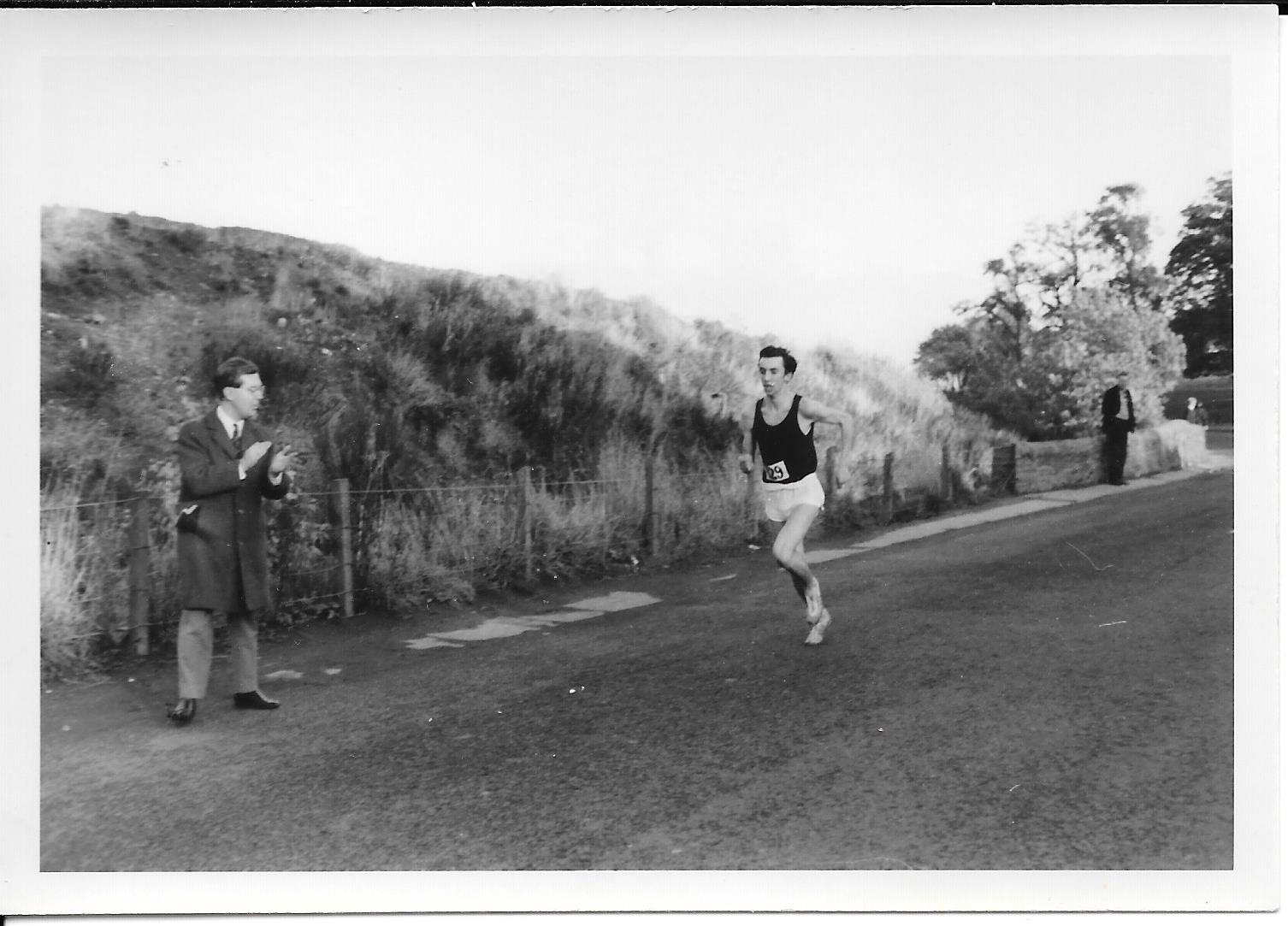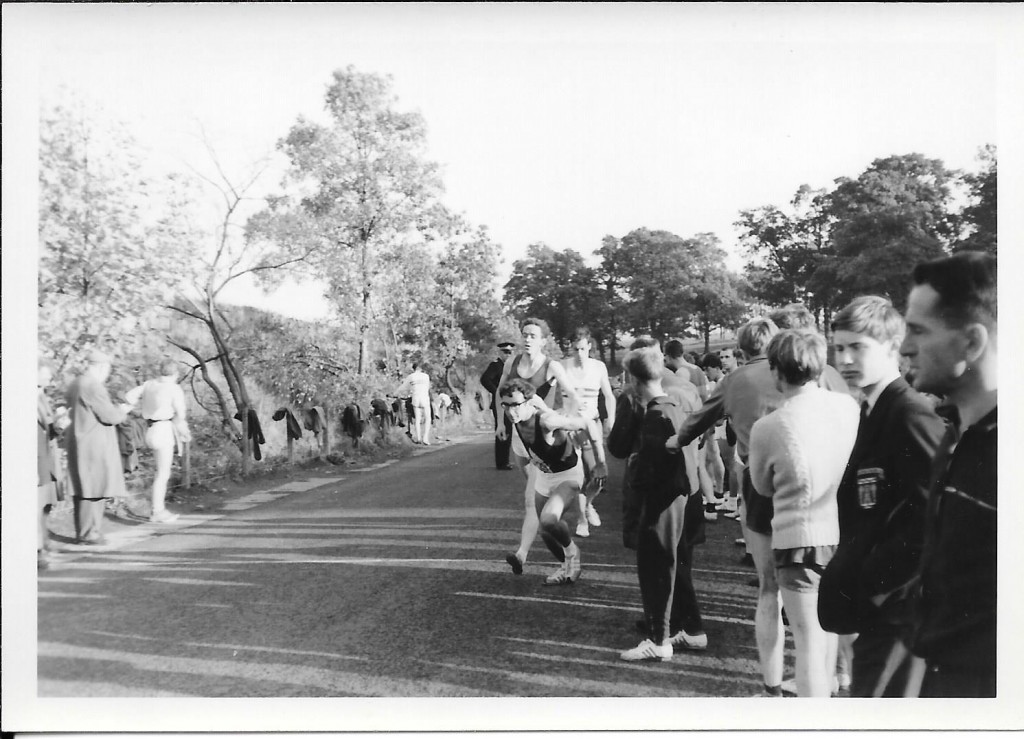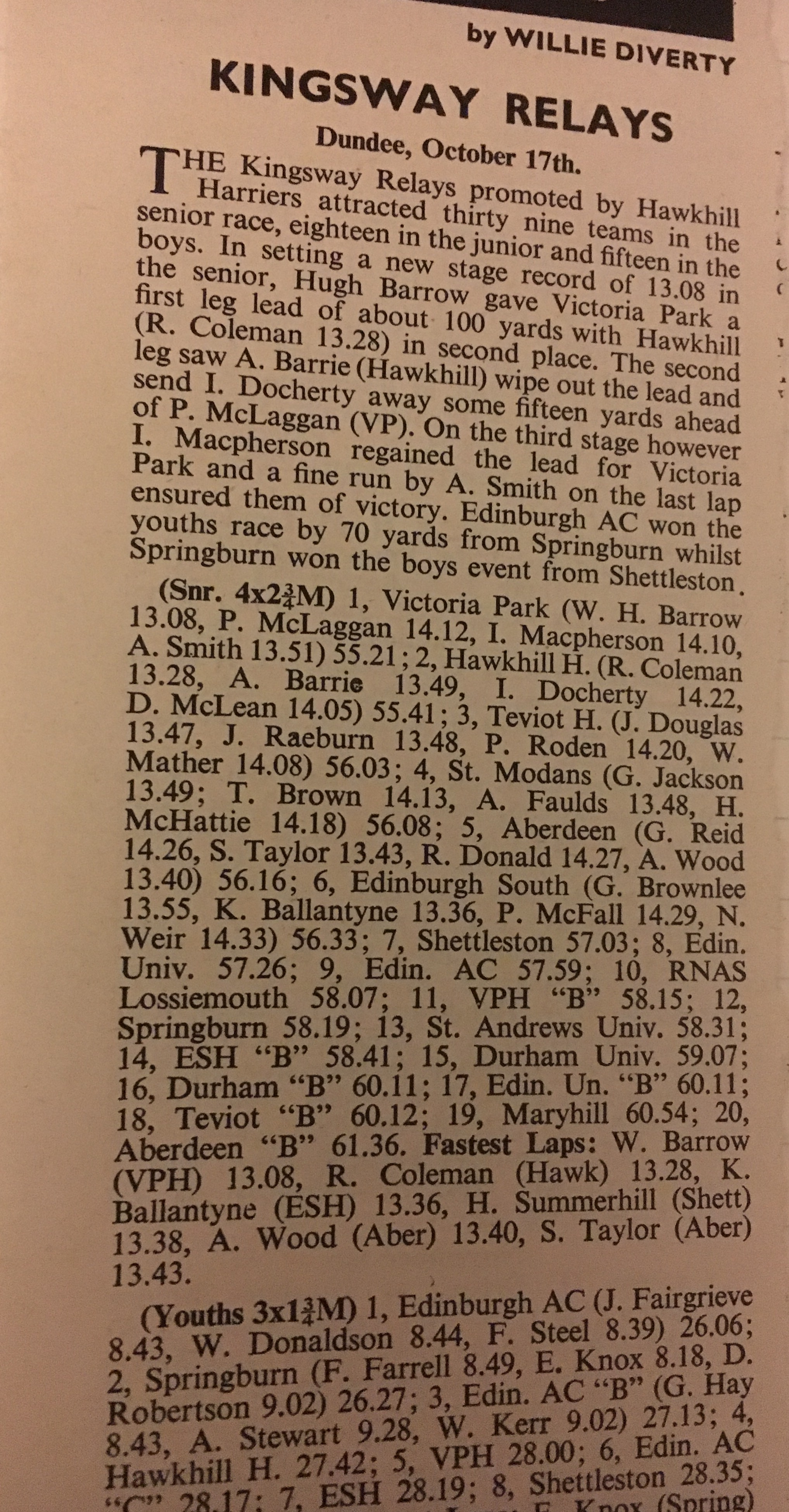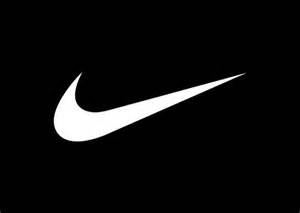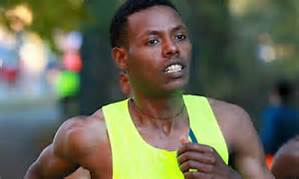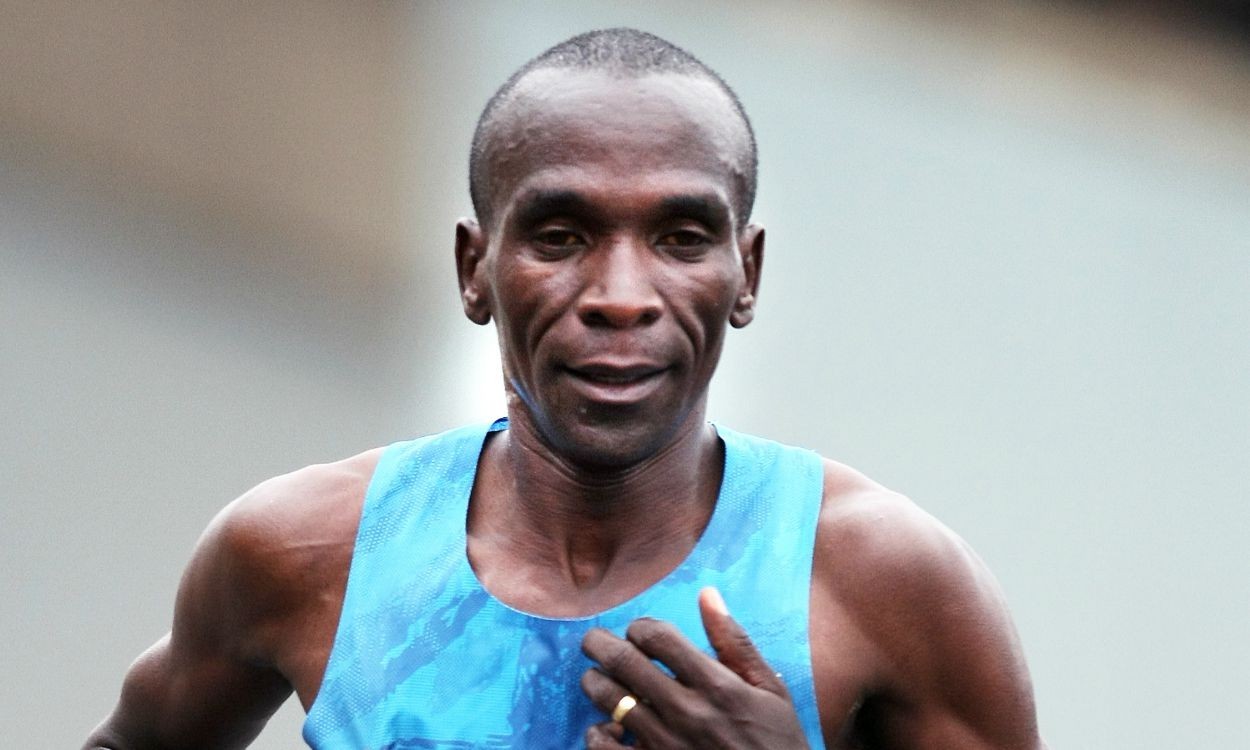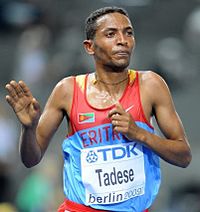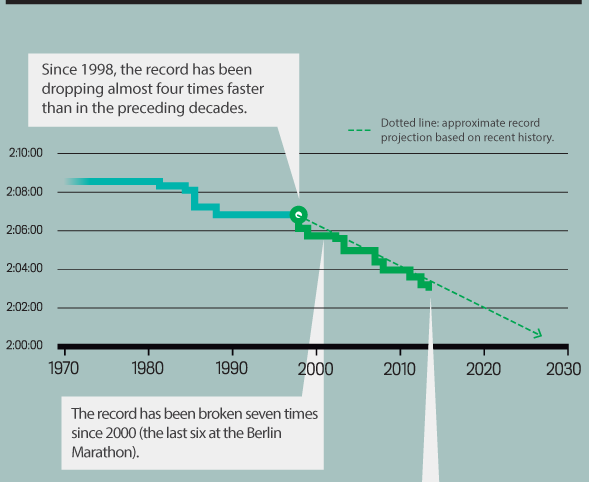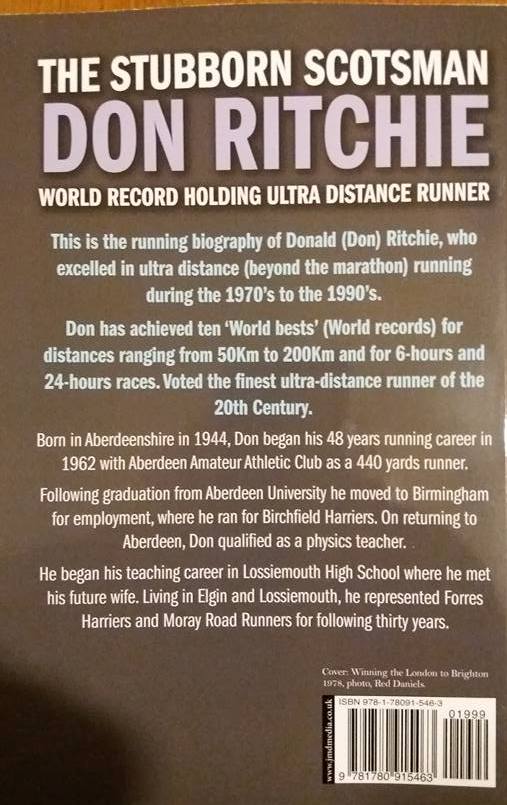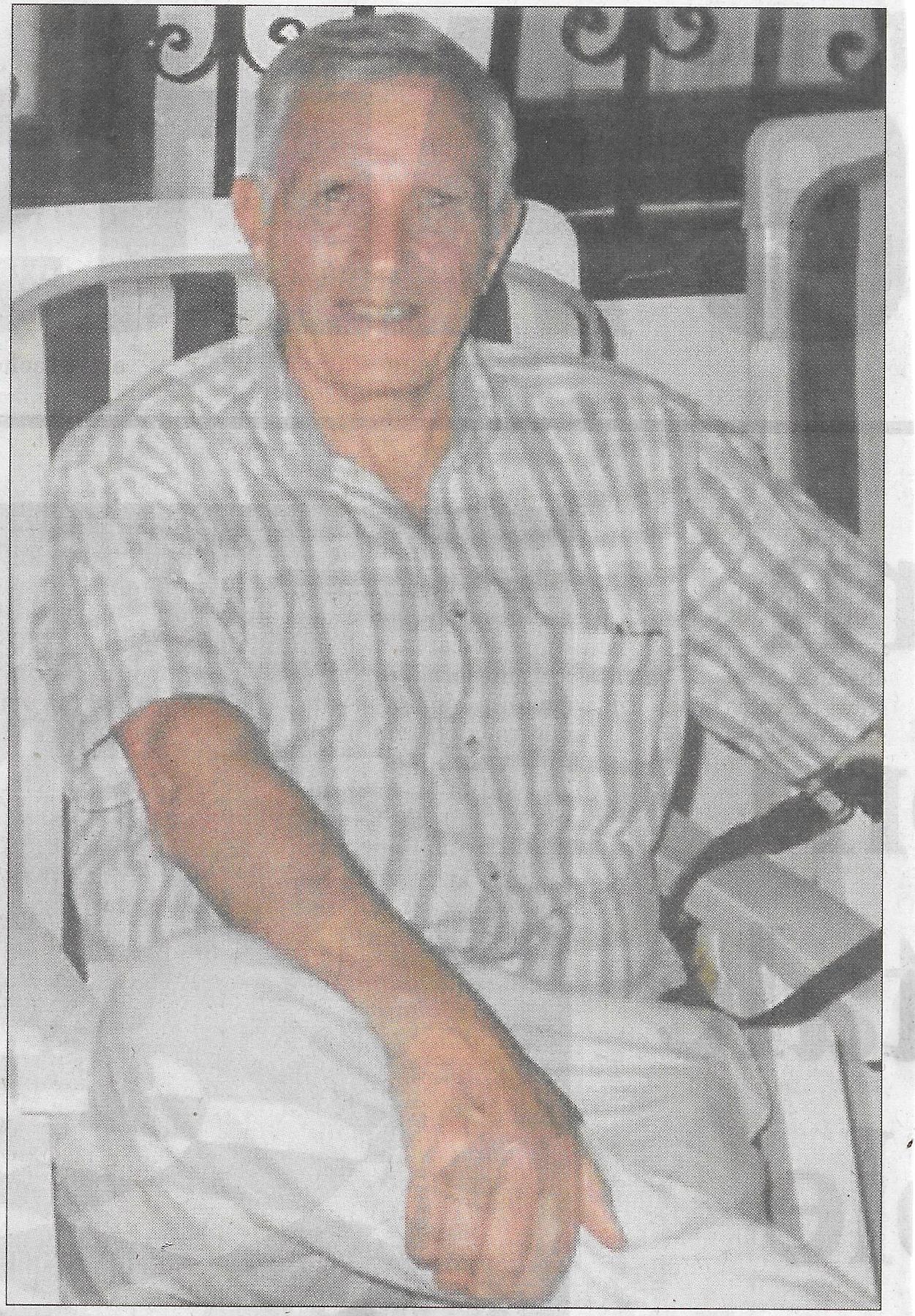The Brandon Street YMCA Building in Motherwell which was the club’s
headquarters for many decades
The first Scottish open clubs were Clydesdale Harriers and Edinburgh Harriers in 1885. Motherwell appeared soon after and a team ran in the national championships in March 1890. They were good enough to finish fourth that year but missed the next few years. Colin Shields explains: “In the final decade of the nineteenth century there was a clear divide between the ‘Senior’ and ‘Junior’ clubs in Scotland. The ‘Senior’ clubs consisted pf Clydesdale Harriers and Edinburgh Harriers, who were the constant entrants and winners in the Scottish Senior Championships, together with West of Scotland Harriers, Edinburgh Northern Harriers, Watsonians CCC and Motherwell YMCA Harriers who entered the Senior Championships on occasions when they were strong enough to offer a challenge to the top teams. The remaining 40 or so clubs in Scotland were titled ‘Junior’ clubs and their members took no part in the Senior Championships on any occasion.”
For this profile of the club’s progress I will be using initially the yardstick of their progress as a club and individually in the two major championships of a short fixture list, the District and the National championships plus the chievements of some of their best runners. The Edinburgh to Glasgow relay will also be an important part of their progress from 1930 to 1939. For the second part of the club’s ‘history’ (1945 – 1967) follow this link.
The championships on 14th March, 1890, were held at Cathkin Park in Glasgow and Motherwell YMCA joined the ever presents of Clydesdale, Edinburgh and West of Scotland in the team contest. The Scottish Sport paper said that there were over 50 cross-country clubs equally capable of entering experienced teams but they did no do so. They went on to ask why they did not do so. The reality is that four teams and a total of 46 runners turned out and Motherwell was fourth. In 1891 they improved to third place behind Clydesdale and Edinburgh Harriers. There was no team from the club for several years but the ‘Glasgow Herald’ printed the entire field for the National Championships of 1895 and there was one runner from the club entered as an individual – J Mills – and he was not in the first 17 finishers. In 1898 there was another third place for the club with two runners in the first ten – Yuill and Pitt – and six of the seven men who started that afternoon in Musselburgh completed the course. Positions of their runners – 5, 10, 14, 20, 22, 31. Clydesdale won the title with Watsonians second. Edinburgh and Edinburgh Northern were fourth and fifth.
The pattern of not entering teams in the National was maintained and the next time the club was mentioned in connection with the event was on 9th March 1901 at Lochburn Road Maryhill where the trail was laid by Maryhill and Monkland Harriers. Three clubs entered – CH, EH and Coatbridge with one from MYMCA (Arthur Pitt) not in first three although well up at halfway. There were no Motherwell YMCA teams in any of the three main races in 1901/02 – the Clydesdale Harriers individual team and handicap races in November, the Junior Championship in Februaru (later to be the district championship) nor in the national championship at Myreside in March 1902. Seson 1902/03 told a similar tale although to be fair they were not the only club missing all the major races – the Western District event in February 1903 only had four teams entered who finished, in order Larkhall YMCA Clydesdale Harriers Garscube Harriers and Wellpark Harriers. This would change with 1904.
Into season 1903/04 and the club’s first cross-country international runner was selected – and he was not the only top class man representing the club. On February 13th 1904 the Western District Championships were held at Hamilton Park Race course and Motherwell’s W McFarlane finished second to Kennedy of Garscube Harriers with Cochrane of Olympic Harriers third and T Young of Motherwell fourth. In the team race they were second to Garscube by ten points with Clydesdale Harriers third 60 points back and then Paisley Harriers fourth and Motherwell B team fifth. Neither the team nor any of the runners were placed in the National championship but J Barrie was selected the following Wednesday evening for the team to represent Scotland. Hi running in the national was not a fluke – he had run consistently well all summer and had been third in the SAAA Four Miles championship. He finished 13th in the international.
One of the biggest events of the cross-country season was the long established and well supported Clydesdale Harriers seven and a half miles open and team race held annually at Scotstoun Showgrounds. It was held on November 21st in 1904 and all the top clubs entered. Seventeen teams of six were on the starting line as well as 71 individuals. To keep the crowds entertained, there was a 100 yards race with 31 entrants held while the runners were out in the country. T Sommerville of Motherwell YMCA was seventh, while J Sommerville of the same club was fourth in the handicap race incorporated into the event. The club team was ninth of the seventeen.
The next big race was the West District Championships where the club performed nobly. The report in the ‘Glasgow Herald’ of 6th February 1905 read as follows:
“The Western District Championship of seven miles, which now takes the place of the discontinued junior championship, was run on Saturday afternoon from the showyard of the Glasgow Agricultural Society at Scotstoun, Whiteinch, on the western outskirts of Glasgow. Nineteen clubs of twelve men each had entered for the team and individual races and they ran twice round the track of the show grounds and out into the open country, up hill, across ploughed fields, grass, road and water jumps. The course was a trying one as the ground was soft and slippery and rendered the going very heavy. Several clubs ran short of the full entry but no fewer than thirteen teams finished the full competition number, and 132 individuals completed the full distance and counted in the aggregates of six men each. The results were as follows:
1. T Young (Motherwell YMCA); 2, P Russell (Bellahouston H); 3. W McFarlane (Motherwell YMCA); 4. WJ Martin (Clydesdale); 5. GS Campbell (Clydesdale); 6. J Sommerville (Motherwell YMCA); 7. W Muirden (Motherwell YMCA); 8. WH Currie (Wellpark H); 9. J Whyte (Paisley YMCA); 10. J McCulloch (Motherwell YMCA).
Teams: 1. Motherwell YMCA ; 2. Clydesdale Harriers; 3. Bellahouston Harriers.”
However when the National took place at Scotstoun on 4th March, the team was not in the first eight and there was no individual in the first three, although they did have two in the international team. In the race itself at Baldoyle Racecourse at Dublin, TS Young finished 37th but unfortunately JA Sommerville failed to finish.
We are concentrating here on cross-country championships but members were active on the track over distances from the 100 yards up. For instance on 27th May in the Clydesdale Harriers Sports at Ibrox R Patterson won the three miles race quite comfortably. And at the Rangers Sports on 3rd August JA Sommerville won the Four Miles handicap off 335 yards from Arthur Duncan on Scratch.
The club’s excellent run in the Western District Championships was followed two years later with a victory in the 1907 Western District Championship that was reported as follows in the ‘Glasgow Herald’. “Motherwell was gay and sad by turns on Saturday night, gay because of the success of the Harriers in the Western District cross-country championship, and sad because of what happened at Galston in the Scottish Cup ties. But such is life, and yet the Harriers’ gaiety was not so complete as many would have liked, for although they won the team championship, they lost the individual distinction which they looked upon as a certainty for H Young, who for the second time just failed to snatch victory. It was McPhee of Paisley Harriers who defeated him. Both were together entering the final stretch but towards the finish McPhee drew away and won a very exciting race.” In the national that year the club produced their best run in the event ever up to that point when they finished third (102 points), behind Clydesdale and West of Scotland.
The club was first in the Western District in 1908 too and the report was headed “Muscular Christians.” It read
“Progress is both genuine and general in the realm of cross-country sport. No fewer than twenty five teams took part in the Western Distrct Championships at Scotstoun on Saturday. The conditions were all that the most fastidious could desire, the going, if a little sluggish in some places, being, on the whole, better than is usually associated with this event. On that account racing was all the keener, and, if the winner of the individual championship had an easy journey, the team contest could hardly have been closer with such a large entry. The winners were the Motherwell Young Men’s Christian Association with 135 points, Glasgow Young Men’s Christian Association being second with 155. Since the instittion of the championship in 1903, Motherwell’s ‘muscular Christians’ have won three times, which is highly creditable, showing as it does that, among other things, they are keen on cross-country sport and always replenishing their ranks with promising runners.” The individual winner was G Culbert of Monkland Harriers. This victory encouraged Motherwell to enter their best team possible in the national championships and the result was a victory – their first win the the premier cross-country event. They had no one in the first five home but won with 79 points to Clydesdale’s 82 with West of Scotland third. The club was gaining quite a reputation – I quote from the race report in the ‘Herald’:
“Clydesdale were the popular fancy but to the surprise of all the muscular Christians of Motherwell captured first place. A few weeks ago they won the Western District Championships, and they are the only team in Scotland to have placed themselves with one bound in the honourable position of National Champions. The Motherwell YMCA Harriers have had quite a wonderful career. They took part in the Western District Championships five times and were first three times and second twice, and now they crown these distinctions by taking the national crown at the first time of asking.” Their first man across the line at the end was J Miller in sixth place and as a result he was selected for the International at Stade Colombes in France where he was 28th.
On 6th February, 1909, Motherwell YMCA along with 24 other clubs entered the Western District Championships at Scotstoun. Having won it for two consecutive years, they were unplaced, and the ir first counter (D Peat) in the field of 239 finishers was sixth. Just out of the medals in the national, their fourth place in the team race was nevertheless a creditable performance. The following year they had no one in the top twenty indiviuals and the club was unplaced in the team race. After two fallow years, the club’s name would appear in the results lists again in 1910/11.
D Peat was the first of the Motherwell YMCA men to feature when he won the Western District title in February, 1911. The race was held at Carntyne with 27 teams of twelve runners (6 to count) each entered. Peat won from Mason of Paisley Junior Harriers, leading the Motherwell YMCA team to second place, the other runners being P Divers 11, RF McMurdo 21, J Brown 29, D Clarkson 34 and A Rae 42. The national that year was held at Polloshaws in Glasgow and it was an unfortunate one for the club. A Kerr of Motherwell was third individual and D Peat was seventh but the club did not finish six runners so could not count in the team race. Individually, Kerr was selected for the International match at Newport and Peat was one of five reserves. Kerr was twenty second in the match.
In the West District Championships in February, 1912, Motherwell YMCA was one of 27 teams of twelve men but were unplaced in the race, either as individuals or as a team. Came the national on 2nd March, and Angus Kerr confirmed his place as one of Scotlnd’s top runners when he finished second to Tom Jack. The team was not in the first four however but Kerr won his second international vest for the race. 28th this time he would win two more – one when running in the colours of Bellahouston Harriers the following year, and another as a returned member of Motherwell in 1920.
The district championships on 1st February 1913 were called off for the first time. Given that the Clydesdale Harriers fixture lists typified the attitude of the day when it said in bold italic print that “Runs will take place, whatever the weather” it must have been bad. The ‘Glasgow Herald reported: “For the first time within memory the Western district cross-country championships, arranged for Saturday last had to be called off owing to extremes of weather. The race started off from the showgrounds of the Agricultural Society at Scotstoun and at three o’clock on Saturday afternoon the weather was fine, but there had been a heavy snowfall and the higher grounds were white. The hares were provided with an amount of coloured paper, but as it turned out the had not sufficient to completely cover the trail over the snow covered patches with the result that so many runners missed the course that at the finish the judges and committee were obliged to declare the race null; and void. ” The race was re-run on 13th February but although Motherwell was among the teams entered they were not placed at the finish. It was a similar story in the national – they were entered but there was not mention of the team or its athletes beyond that. Angus Kerr however was running for Bellahouston who led home by Baldy Craig, finished first.”
A year later the the first war started in 1914 and the country not just running went through a tremendous upheaval. Almost all cross-country running ceased for the duration although some track events carried on. These had restricted programmes and contained events restrictedto members of the armed forces. The cross-country season got under way again on 2nd February 1920 with the Western District Championships at Rouken Glen with 20 teams entered including Motherwell YMCA. The team was not placed this time round but they had a race before the national. The first post-war national championship was held in 1919. On 6th March, also in Rouken Glen Park on the south side of Glasgow, Motherwell YMCA finished second to Shettleston Harriers. Their team was led home by Angus Kerr in eighth and consisted of Kerr, James Humphries 13th Williamson 15th, John Humphries 17th, Lawson 23rd and Burt 48th. Kerr was selected for his fourth international third as a member of Motherwell, and finished as a scoring member of the team when he was eleventh.
By the start of the 1920’s the club was well-established as one of the oldest clubs in the land, a club that had been successful at District and National level, and one that had produced many top class athletes.
*
The Twenties were marked by economic depression, men travelling the land in search of work, teams reduced in number because of that and also because many jobs involved Saturday working as a condition of employment. Nevertheless the sport continued to develop and Motherwell YMCA produced several very good athletes, including one of their best ever in JNH Gardiner, international cross-country runner in three successive years and were involved in the beginnings of the prestigious Edinburgh to Glasgow Relay in 1930.
In the National of 1921/22 they were sixth team of 16, 1025.26 fourth of 21 teams entered, 1926/27 fifth in the national after tie-ing with Plebeian for first place in the West Districts.
It was in 1927/28 that their next internationalist first showed his talents. On 4th February in the Western District championships at Hamilton JNH Gardiner was second to R Henderson of Glasgow Harriers but the club was well down in sixteenth place of the twenty seven clubs that started. Into March and at the National Championship, the club was fifth out of 19 with the counting runners being Gardiner (6), McEwan (31), Kerr (61), Shaw (74), Archibald (79) and Simpson 87. Gardiner was also second Junior. The ‘Herald’ commented “J Gardiner, Motherwell, is another improving young runner whose performance of sixth and first man home for his club, proves that his recent “Western” racing when he chased R Henderson, Glasgow, home was no flash in the pan.” It would be another year before he won the first of his three Scottish vests. On 2nd February, 1929, JNH Gardiner was again second in the Western District Championships with WH Gardiner sixth and the club up in fifth position. In the National a month later Gardiner was seventh, ten seconds behind Dunky Wright, and selected for the International at Hippodromede Vincennes and was in the team but could do no better than 74th in the big race.
The District sturcture was altered in February 1930 with a new South West District and most frmer members of the old Western District being in the new Midland District. In this inaugural championship on 8th February 1930, WH Gardiner (JNH’s brother) finished second to J Campbell of Bellahouston. His brother did not run and the club finished seventh. In the National on 1st March, they were 10th team, while JNH Gardiner was eighth. The other runners were Maitland, Shaw, Archibald, Simpson, McEwan. Selected for the international at Royal Leamington Spa JNH Gardiner finished 52nd.
1930 was a significant year for Scottish distance running – first the new districts structure then on 26th April the very first Edinburghto Glasgow Relay was run. Won by Plebeian Harriers from Dundee Thistle Harriers, Motherwell Harriers was fifth. Their team consisted of R Graham, R Maitland, R Simpson, WJ McEwan, J Archibald, JNH Gardiner, D Shaw and WH Gardiner.
In February 1931, R Simpson was first finisher for Motherwell when he was sixth but the ‘Herald’ correespondent wasdisappointed n the running of WH Gardiner who had been a favourite for the individual honour. Well up early on he took a stitch, dropped back, picked up ten places and finished eleventh. Their next runner was back in 54th and the team finished eighth. JNH was back for the national and finished sixth, while WH was second scoring runner for the club in twentieth place. With J Archibald the third man home back in the 90;s, the team was twelfth. Gardiner was picked again for the Scottish squad and ran in the international at Baldoyle in Ireland where he finished 48th. Domestically, the second Edinburgh to Glasgow was held on 25th April and Motherwell, minue WH Gardiner, who had been second fastest on his stage the year before, and Maitland, who had held fourth on the second stage, could do no better than twelfth.
The races we have been looking at all required six- or eight-man teams but there were also four man relays being held as district championships. If we look at the Motherwell YMCA teams performances in the new Midland District relays of the 1930’s we see a table like this.
Year |
place | comments |
|---|---|---|
1929/30 |
3rd | – |
1930/31 |
1st | Graham 3rd fastest |
1931/32 |
3rd | WH Gardiner 6th fastes |
1932.33 |
8th | R Simpson 5th |
1933/34 |
3rd | Simpson 7th |
1934/35 |
5th | Simpson 5th |
1935/36 |
6th | Simpson 3rd |
1936/37 |
5th | Simpson fastest |
1937/38 |
12th | – |
1938/39 |
9th | – |
Not a bad record at all. The table only shows the bare bones of the results though – eg in 1930/31 Graham was third fastest, WH Gardiner fourth fastest and JNH Gardiner10th fastest. For all JNH Gardiner’s last international vest was in 1931, he was still running in relays in 1934/35. In the Midland Championships proper between 1930 and 1938 they were placed 8th, 4th, 4th. no team in either 1933 or 1934, 8th and 8th. R Simpson might well have ben the unluckiest runner the club has ever had. Twice – in ’34/’35 and ’35/’36 – when he was favourite towin the District Championships, he was third, in the relays he ran consistently well being being in the top five times in four relays including fastest time of the day in ’36/’37, and yet he never made the international team or won a major championship.
In the National through the 1930’s the club was – like many a club at that very time – in the doldrums a bit with successve polacings of 13th, 22nd (out of 22), 9th, 15th, 16th, 13th and 16th. The important thing was that – unlike some others – it kept going and turning out teams. Some of the olderclub servants like JNH Gardiner were still turning out iun club runs, although not racing. There were also many good clubmen and organisers who had done their running, men like Roddy Devon, Alex Nangle and Bobby Craigen (all names familiar to post-war athletes of whatever club for a couple of decades!) who were to help it turn the corner. Read about their post 1945 teams and glory days here . This second half of the tale is told by Colin Youngson.
